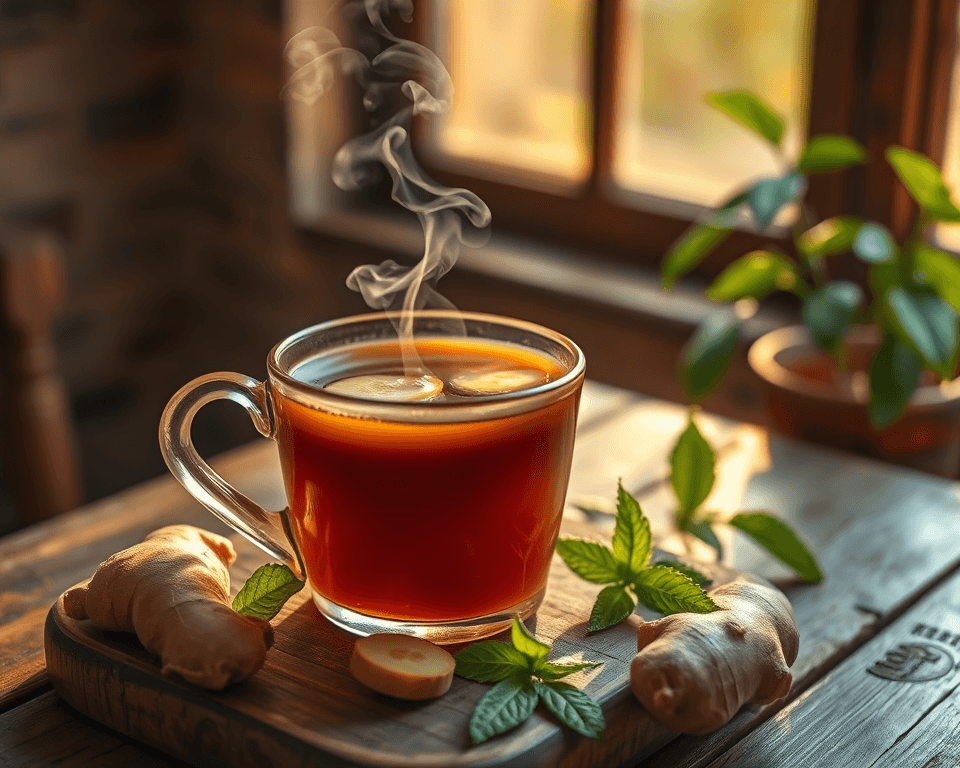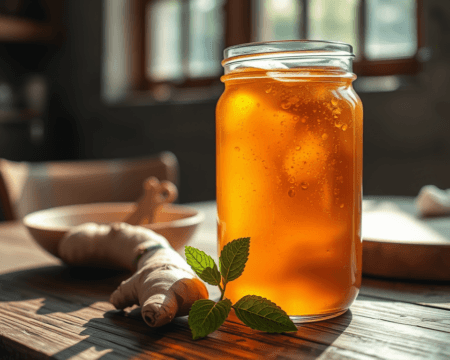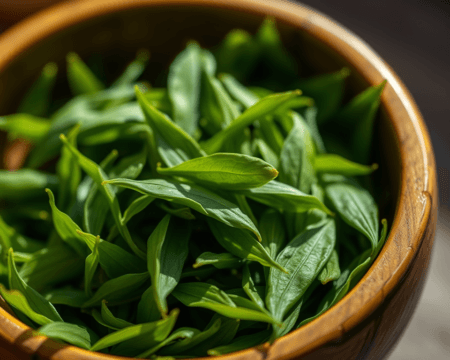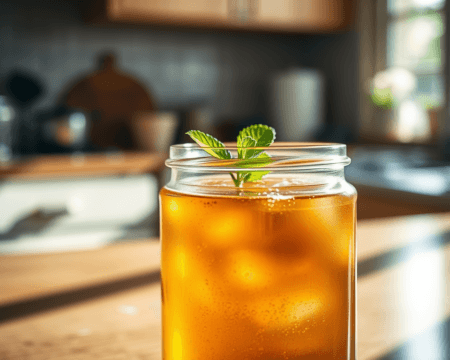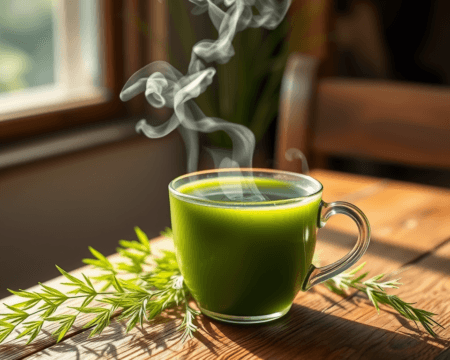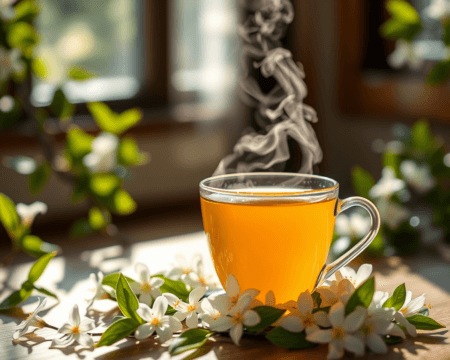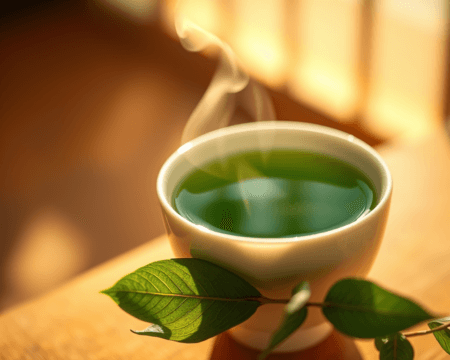Tea is more than just a drink; it’s an experience. Think of it as liquid therapy, packed with flavor, vibrancy, and health benefits. I can’t tell you how many times I’ve brewed a cup of my favorite chai or tried out some herbal concoction that made me feel like a million bucks. It’s not just about drinking tea; it’s about transforming it with some killer ingredients that elevate the whole deal. Ready to explore what people throw into their tea for that perfect kick? Let’s get into it!
Key Takeaways
- Both traditional and exotic ingredients can enhance flavor and provide health benefits in tea.
- Sweeteners like agave and stevia affect taste significantly but offer healthier options.
- Dairy alternatives like almond and oat milk can transform your tea experience, especially for those avoiding animal products.
- Ingredients like turmeric and chamomile can serve as natural remedies with impressive health benefits.
- Global tea practices reveal exciting trends and unique additions that could spice up your daily brew.
Common Additives in Tea
Traditional Ingredients
When we talk about classic tea, it’s hard not to mention staples like black tea, green tea, or even herbal blends. The beauty of tea lies in its versatility, and traditional ingredients play a huge role in that.
First off, milk—whether it’s whole milk for that creamy texture or condensed milk for something sweeter—can totally change the game. I’ve often brewed myself a cup of English breakfast tea, only to find it transformed into a cozy hug with just a splash of milk and a dollop of honey.
Then there’s lemon. It not only zests things up but also adds Vitamin C. Picture this: sipping a warm cup with a twist of fresh lemon while snuggled up under a blanket. Classic! Don’t forget about sugar—it’ll sweeten your experience, but I’ve got news: there are tons of alternatives out there.
Uncommon Ingredients
Now here’s where it gets fun. People are pushing the boundaries and adding all kinds of wild stuff to their tea. Ever tried hibiscus tea? It’s tart, refreshing, and packs a punch with antioxidants. Or how about matcha, that vibrant green powder that’s exploded in popularity? It brings a whole new level of energy to your brew, plus it’s loaded with nutrients. You can’t go wrong with rooibos either. It’s naturally caffeine-free and delivers an earthy sweetness that can be addictively smooth.
When you’re feeling adventurous, throw in some ginger or peppermint. These ingredients aren’t just for flavor; they bring health benefits alongside that zing and freshness. They can boost digestion and give your immune system a little love, too.
The Flavor Profiles of Tea Additives
How Sweeteners Influence Tea Taste
Sweeteners are crucial players in the grand tea game. Why settle for just any sweet taste when there’s a world of sweet alternatives? Yes, sugar is a go-to, but agave syrup gives a honey-like sweetness without being overly sugary. Then there’s stevia—it’s natural, zero-calorie, and packs a mighty punch in terms of sweetness.
If you’re looking for that syrupy flavor without the guilt, I suggest freeze-dried fruit. It’s amazing how it can add a flavor explosion while keeping things low-calorie. Imagine a cup of green tea transformed with some freeze-dried raspberries. The sweetness and tartness dance on your palate, making your tea experience that much more enjoyable.
The Impact of Dairy and Non-Dairy Options
Let’s chat about dairy—and non-dairy—for a sec. Are you a fan of creamy tea? I can’t blame you. Pour a bit of whole milk into your chai, and it’s like a comforting hug in a mug. But here’s the kicker: there are loads of vegan milk options. Almond milk? Check. Coconut milk? Yes, please! Oat milk? Now we’re talking!
These alternatives do wonders for the texture. They add a rich flavor without making things too heavy. Ever tried a chai latte with oat milk? It gives that frothy, dreamy feel while still being incredibly satisfying. Trust me; once you go down this road, you might find it hard to go back.
Health Benefits of Tea Ingredients
Herbal Additives and Their Effects
Let’s get real for a minute. The health benefits of tea can’t be ignored, especially when you start incorporating herbal remedies. Ingredients like turmeric are not just trendy; they’re legit powerful. Turmeric is loaded with curcumin, which boasts anti-inflammatory properties that might just help your joints feel like they’re twenty again.
On the more mellow side, you have chamomile—the go-to for winding down after a long day. It soothes the soul and supports better sleep, and trust me, after a rough day, that cup of chamomile can work wonders. And let’s not leave out echinacea—a natural way to fortify your immunity.
Nutritional Insights of Common Additives
When you’re sipping on tea, you want to feel good about the ingredients. Do you know what’s in that sweetened cup of goodness? The nutritional value of your tea additives plays a huge role here. Many traditional sweeteners add empty calories, but alternatives like brown sugar or even coconut sugar come with trace minerals.
Flavonoids found in many teas? They’re antioxidants that fight free radicals in your body, giving you a leg up on health. That little lift from vitamin C or polyphenols might just keep you feeling in tip-top shape.
Trends in Tea Consumption and Additive Popularity
Rising Ingredients in Modern Tea Culture
The tea game is evolving, and you’ve got to keep up with the trends. Bubble tea has exploded, and it’s not just a phase; it’s a staple in so many places. Imagine slurping on a creamy matcha latte or sipping down a vibrant superfood tea that makes your insides happy. These innovations keep tea exciting and fresh.
Detox teas are another rising star. They promise to cleanse and rejuvenate, with unique blends that often include ginger, lemon, and green tea. The fusion teas out there offer anything from earthy to fruity flavors, and you should definitely explore them before you think it’s too risky.
Global Cultural Variations in Tea Additives
I’m all about looking at how tea is enjoyed around the world. You wouldn’t believe the creative ways cultures personalize their brews. Moroccan mint tea, for example, has that divine combination of sweet mint and green tea poured from a height, delivering a magical aroma that captures the senses.
And then there’s Indian masala chai, a spicy blend with milk and a medley of spices like cardamom, cloves, and ginger that pretty much warms your soul. Can you say comfort in a cup?
Japanese matcha is another wonder, meticulously whisked into a frothy preparation that reflects an art form—a ritual that celebrates the experience just as much as the flavor. Not to forget the heartwarming Russian samovar tea tradition—where tea is brewed strong and diluted with boiled water, often served with sugar, lemon, or jam.
Creative Combinations: Unique Recipes for Tea Lovers
Crafting the Perfect Tea Blend
This is where your creativity can shine. Crafting personalized blends is like becoming an alchemist in your own kitchen. Maybe you’re feeling adventurous and want to pair up those exotic botanical blends with herbs like hibiscus and ginger for a refreshing summer drink. Just mix two tablespoons of dried hibiscus flowers with a tablespoon of dried ginger in your brewing pot, add boiling water, let it steep, and boom—you’ve got yourself a potion that’s as delicious as it is eye-catching.
How about a tea steeped with a blend of chamomile and vanilla? Think outside the box and bring a touch of the unexpected. The infusion techniques available today can help you master your flavors, and trust me, you’ll want to show off your signature drink at every gathering. It’s about experimentation, so don’t be scared to taste as you go—minute adjustments here and there will lead you to your perfect cup.
Using Herbs and Spices for Flavor Enhancement
Spice things up! Seriously, consider enhancing your tea with aromatic spices. A simple dash of cinnamon can transform your standard black tea into something rich and warming. Or try adding cardamom to your green tea for a unique flair that makes it instantly exotic.
Don’t forget about vanilla! A drop of vanilla extract can turn your regular tea into a decadent dessert-like experience. Not only is it delicious, but you’ll also get a fragrant bonus that makes your entire kitchen smell divine. I’ve experimented with nutmeg in chai, and let me tell you—it’s a game-changer. You’re not just making tea; you’re creating a whole vibe.
Embrace the freedom to play around with flavors. The world of tea is your oyster, and there are no rules when it comes to getting creative. So go ahead, elevate your brew, and explore the delightful universe of tea additives that not only tantalize your taste buds but also enrich your health.
Frequently Asked Questions
What are the health benefits of adding turmeric to tea?
Turmeric contains curcumin, a compound known for its anti-inflammatory and antioxidant properties. Adding turmeric to your tea may help improve digestion, boost immunity, and reduce inflammation, making it a beneficial addition for overall health.
Can I use sweeteners in tea without affecting its health benefits?
Yes, healthier sweeteners like agave and stevia can enhance the taste of your tea without adding significant calories. While traditional sugars can lead to health issues, these alternatives provide natural sweetness and can be a better choice for maintaining overall wellness.
How can dairy alternatives change my tea experience?
Dairy alternatives like almond and oat milk can add creaminess, flavor, and nutritional benefits to your tea. They are great for those avoiding lactose or animal products, and they often have lower calories and sugar content compared to regular milk.
What are some popular global tea practices worth trying?
Around the world, tea drinking varies widely. For instance, in Morocco, mint tea is a cultural staple, while in India, chai combines spices and milk. Exploring these practices can introduce unique flavors and enhance your tea-drinking experience.
Are there any specific teas that enhance relaxation?
Chamomile tea is well-known for its calming effects, making it an excellent choice for relaxation. Other herbal teas, such as lavender and valerian root, can also promote a sense of tranquility and help improve sleep quality.
What are some examples of exotic ingredients to try in my tea?
You can explore ingredients like hibiscus, lemongrass, or matcha to elevate your tea blends. These ingredients not only add unique flavors and aromas but also come with various health benefits that can enhance your overall tea experience.
How do I properly brew tea with added ingredients?
When adding ingredients like spices or herbs, steep them along with your tea leaves or bags. Adjust the brewing time according to the type of tea you use, usually between 3-5 minutes, to ensure the flavors are well-extracted without becoming bitter.
Is it safe to consume tea with added exotic ingredients daily?
Generally, it is safe to enjoy tea with added ingredients daily, provided those ingredients are not in excessive amounts. However, it’s important to be aware of any personal allergies or dietary restrictions and consult with a healthcare provider if you have concerns.
Can I combine multiple ingredients in one tea blend?
Absolutely! Combining various ingredients can create a personalized flavor profile and enhance health benefits. For example, mixing ginger, lemon, and honey results in a soothing blend that’s great for digestion and immune support.




